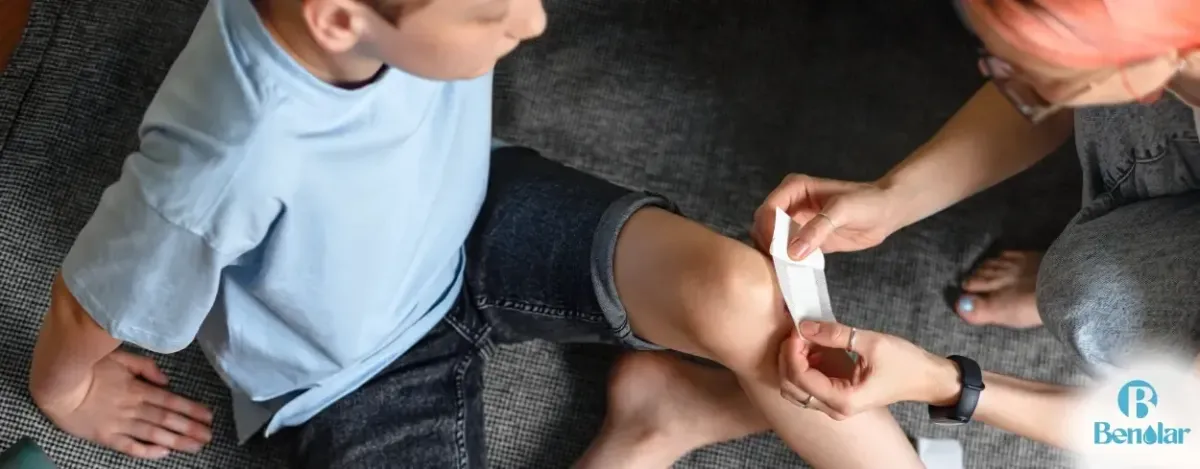
Build Your Ultimate First Aid Kit
Building Your Life Saving First Aid Arsenal
Space matters most when creating your ultimate first aid kit. You want something compact enough to grab without hesitation, whether hiking through woods or traveling cross-country. The perfect kit balances comprehensive care with practical portability.
We often focus on what to include but overlook how everything fits together. A bulky, disorganized kit becomes the one left behind when you need it most. Since space remains our most precious resource, every item must earn its place through versatility and necessity.
Essential Components That Deserve Space
Your compact first aid kit should prioritize multi-functional items. Start with a non-toxic disinfectant that doubles as a wound treatment solution. Benalar, a hypochlorous acid formula, works exceptionally well because it's safe for all skin types, all ages, and even animals while promoting healing.
Include bandages in various sizes to accommodate different wound types and body areas. A roll of gauze provides versatility for larger injuries. Add a small pill case containing pain relievers like Advil and any personal emergency medications needed by your group.
Don't forget practical tools like tweezers for splinters, a small syringe for wound irrigation, and a pair of disposable gloves for messy situations. For bonus comfort, pack some Icy Hot or similar topical pain relief.
Here's our unexpected recommendation: include candy. It serves as an excellent distraction for children during treatment, but works just as well for adults. Pain creates anxiety, and sometimes a simple sweet treat provides the psychological comfort needed during treatment.
The Peace of Mind Factor
Most people live in the moment, focused on adventure and fun rather than potential mishaps. But having a well-prepared first aid kit brings tremendous peace of mind to those few who naturally worry about what could happen.
Your preparedness creates a safety net that allows everyone to enjoy activities more fully. The worry warts in your group can relax knowing you've thought ahead and packed everything needed for unexpected situations.
Smart Organization Systems
Organization transforms a collection of supplies into a functional emergency response system. We recommend several approaches:
Purchase a container with built-in dividing compartments so items stay in their designated spaces. This prevents rummaging through a jumbled mess during stressful situations.
Label each section clearly so anyone can quickly locate what they need, even if you're not present to guide them. Consider color-coding for even faster identification.
For the technically inclined, 3D printing custom dividers creates the perfect organization system tailored to your specific supplies.

Universal Design Principles
The ultimate first aid kit works for everyone, regardless of age or situation. Stock bandages in multiple sizes to accommodate everyone from small children to adults. Your disinfectant should be gentle enough for sensitive skin but effective against germs.
Pain relievers benefit users of all ages, though dosages may vary. Remember that candy truly becomes the universal comfort item, appealing to everyone from toddlers to grandparents.
Education Makes The Difference
Using first aid supplies properly requires knowledge and training. Include a printed quick-reference guide inside your kit, especially for wilderness adventures where internet access becomes unavailable.
Your guide should cover basic procedures for common emergencies: how to properly clean and dress wounds, when to seek professional medical help, and proper application techniques for your specific supplies.
This simple addition ensures that anyone can provide appropriate care even if the most experienced person becomes the one needing assistance.
Maintenance Matters
Most first aid supplies have impressive shelf lives, but certain items require regular checking. Your disinfectant solution typically expires after about a year, so mark the purchase date and replace accordingly.
Medications also have expiration dates that demand attention. Most other supplies like bandages, gauze, and tools remain usable indefinitely if kept clean and dry.
Avoiding Panic Pitfalls
The most common mistake during emergencies isn't technical but psychological. People panic, forgetting where items are located or how to use them properly.
Regular familiarization with your kit contents prevents this reaction. Periodically review what you've packed and how each item functions. This creates muscle memory that kicks in during high-stress situations.
Your calm demeanor during emergencies becomes contagious. When you respond with confidence, the injured person remains calmer too, creating a positive feedback loop that improves outcomes.
Advanced Considerations
For those with specialized training, consider adding suture threads and needles. While most people lack the skills for proper stitching, having these supplies available when traveling with medical professionals could prove invaluable in remote locations.
Environmental extremes require additional preparation beyond your first aid kit. Pack appropriate clothing for cold weather and cooling supplies for intense heat. Your medical supplies remain consistent across environments, but your broader emergency planning should adapt to conditions.
Building your ultimate first aid kit represents more than emergency preparation. It embodies a mindset of readiness and responsibility that transforms uncertainty into confidence. When unexpected situations arise, you'll have everything needed to respond effectively, bringing peace of mind to everyone in your care.

